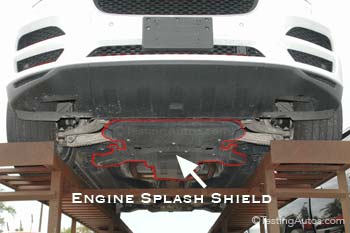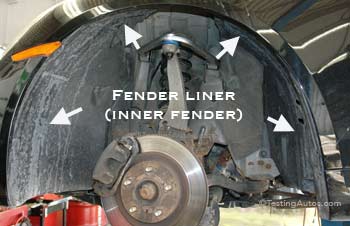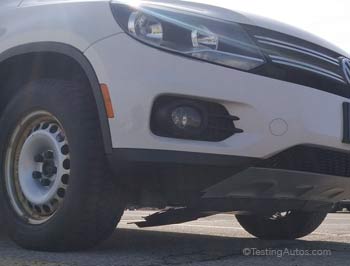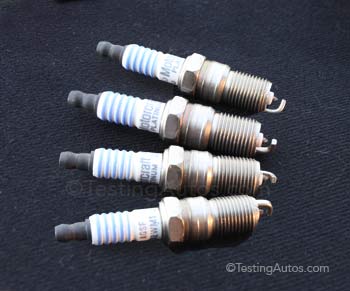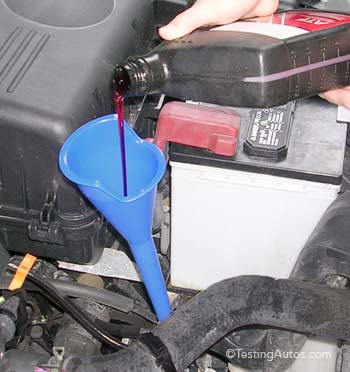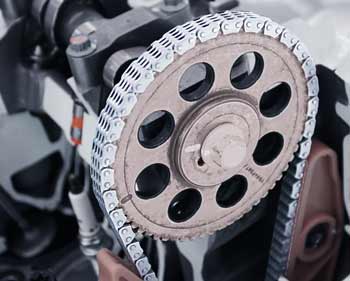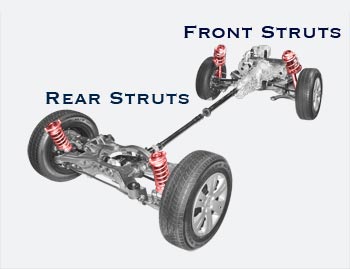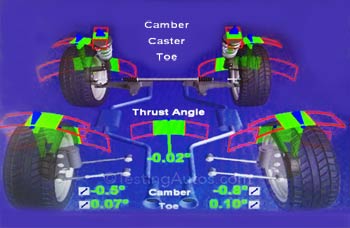Broken/missing engine splash shield or fender liner: repair options and cost?
Updated: March 01, 2020
A plastic engine splash shield (under cover, under shield) protects the engine compartment from water and dirt. To a small degree, it reduces the aerodynamic drag, and as a result, improves highway fuel economy.
In some cars, the engine splash shield redirects the air flow over the components that need to be cooled down, such as an oil pan or an alternator. Some trucks have a metal splash shield.A fender liner (inner fender) is a plastic cover installed inside the wheel well between the wheel and the fender, see the photo below. It protects the car body, as well as the wiring and other components installed inside of the wheel well. Each front wheel has its own fender liner. In some cars rear wheel wells are also protected by fender liners, but the rear liners rarely break.
Due to the location of these parts, they often get damaged. It's a common problem many motorists have to deal with, especially in winter. Plastic parts become fragile when cold and break easily when driving over packed snow, road debris or when parking over a high curb.
Some automakers design cars so that an engine splash shield has to be removed every time when doing an oil change. Because of that, some of the fasteners wear out and get lost over time. If fasteners are missing or broken, you might notice a splash shield hanging down and scraping the road, see the photo below. A loose splash shield can also make a flapping or scraping noise when driving.
What happens if an engine splash shield is missing? If it's missing, splashing water and sand can cause some parts in the engine bay, such as an alternator or drive belt, to wear sooner. We have also seen some electrical problems caused by a missing splash shield. Examples include problems with a windshield washer pump or fog lights, or corrosion inside fuse boxes and transmission wiring harness connectors. The road salt used in the winter months is particularly damaging for the electrical components. If an engine or transmission oil pan is made of stamped steel, it might also rust through over time if not protected.
If one of the front fender liners is partially broken or missing, water will be splashing inside the wheel well and on the back of the headlight assembly. This often causes corrosion and other problems with the headlight wiring and connectors, as well as other electrical units located in the wheel wells. In an older Dodge Caliper, for example, the relay box is located right in front of the left front wheel, under the left headlight unit. The corrosion inside of that box will cause many electrical problems, including a no-start.
If a splash shield or fender liner is hanging loose, your mechanic might be able to re-secure it. If a loose shield or a fender liner is partially broken and cannot be secured properly, it should be replaced, because a loose shield or liner may become a safety concern if it separates while driving.
Advertisement
How much does it cost to replace an engine splash shield? A large center part is priced from $45 to $190 for an average car. Aftermarket parts are cheaper; check prices online before ordering from a dealer. Some cars have a separate front shield and side guards; they are also cheaper: $15-$50 each. You might also need some hardware (fasteners), such as clips and bolts, because old clips break easily. Labor charges vary from $35 to $160 depending on the complexity. Replacing a fender liner (inner fender) will cost $45-$120 for the part plus $20 for the hardware, plus $55-$120 labor charge for an average car.
